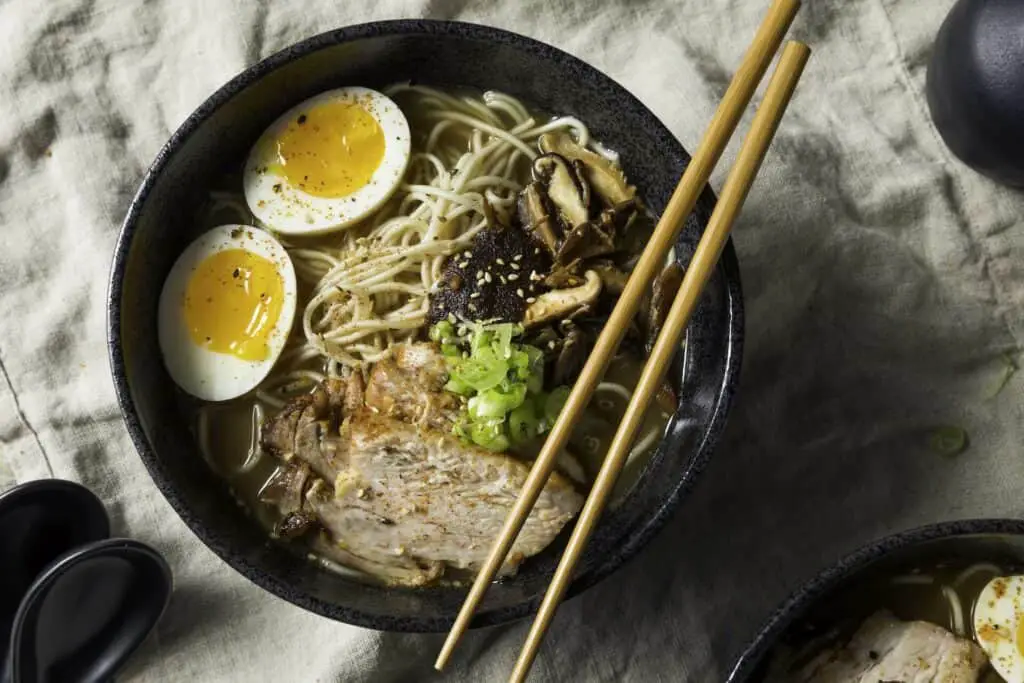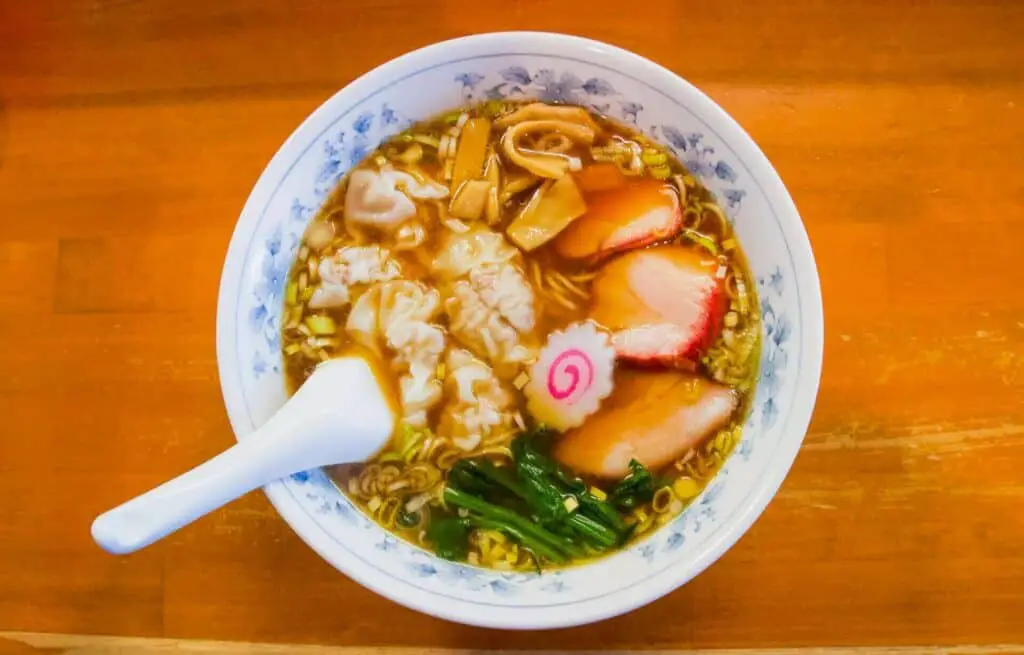Making a balance between eating your favorite dishes and staying healthy is always important. Some people are constantly worried about their calorie intake but still can’t resist their favorite food and often feel guilty about overeating. So, how many calories are there in a bowl of ramen? Keep on reading to find out.
A standard bowl of ramen usually has between 450 to 600 calories. The finesse depends on the type of ramen you choose because there are many different options and a variety of delicious recipes for this dish.


Different ramen recipes include different ingredients, so it is only natural that each recipe contains a different number of calories. The standard portion also might vary depending on where you eat it. In general, ramen isn’t considered unhealthy, but it doesn’t include some important nutrients you should eat daily,
How Many Calories Are There in a Bowl of Ramen?
If you’re interested in trying out different ramen bowls served around traditional Japanese restaurants, you should know that they usually have between 450 to 500 calories. This is the final count in case you finish your soup. Total calories mostly range between 400 to 550 if you don’t drink the entire pot of soup, which most people don’t, which saves about 50 calories. Whether you want to make Top ramen or prefer to eat ramen in a restaurant, you can comfortably enjoy your favorite meal without worrying about calories.
You Should Consider All the Ingredients When Counting Calories in a Bowl of Ramen
Now that you know how many calories this bowl usually has, you must be curious about general nutritional values. Despite the fact that this bowl does not have too many calories, it still lacks some of the recommended daily nutrients, so it is important to remember that this is not supposed to be the main dish in your diet.
Take a quick look at this table and learn more about ramen seasoning and other important nutritional values when it comes to different ramen styles that are popular around Japanese restaurants.
| Ramen type | Heavy grade | Soup | Noodles | Toppings | Total calories |
| Jiro Style Ramen | Heavier | 800 | 600 | 200 | 1,600 |
| Shio Ramen | Lighter | 150 | 225 | 75 | 450 |
| Miso Ramen | Heavier | 200 | 280 | 100 | 580 |
If you’re new at exploring ramen flavors, you’ll probably be surprised by the wide variety of flavors. You should know that every bowl is unique when it comes to seasoning and ingredients that are added to bundles, so this is why all of them have different numbers of calories. The total amount of calories can greatly vary depending on its ingredients.
Lighter Soup Has Fewer Calories
Another thing to consider is the type of soup. There are some light soups that have more calories than other rich soups. For example, shio soup has fewer calories than miso and tonkotsu ramen soup. It is natural that soups made with pork bones are heavier and have more calories than soups made with vegetables or chicken bones.

Other Nutrition Facts Are Also Very Important When It Comes to Tasting Ramen
It is important that you know that this is the weight of noodles before they are boiled. Portions of ramen noodles in Japan are often served in bowls that include 130 to 180 grams of noodles, and you can usually choose rice noodles and egg noodles. Dipping ramen or tsukemen can weigh even more, up to about 250 grams.
Fresh noodles weigh roughly 200 grams after 130 grams are boiled, which is why it is safe to say that they are the bulkiest component of ramen. Noodles also affect ramen’s relatively high-calorie count – this is primarily because 100 grams of noodles contain approximately 27 grams of carbohydrates.
When it comes to general nutrition facts, you should consider some of the main nutrients classic recipes have:
- Carbs,
- Proteins,
- Fat,
- Minerals,
- Fibers,
- Vitamins,
- Salt.
A high concentration of sodium in ramen soup might affect your health. This is why you should be careful about overconsuming your favorite soup if you have some general health problems. Unfortunately, sodium can severely harm your health. Still, if you look at this in general, ramen is still much healthier than some other types of fast food, such as pizza.
Ramen Is One of the Saltiest Japanese Dishes
If you look at Japanese cuisine in general, you’ll notice that ramen is the real example of saltiness, no matter if it’s more or less spicy. Despite this, the Japanese are one of the healthiest nations, so in general, you should not be so worried about this dish unless you consume it daily in more than one portion.
If you want to avoid a higher calorie intake, the only thing you have to do is not drink the whole soup. After eating ramen noodles, you can notice that some soup still remains in your bowl. Instead of drinking it completely, simply skip this step and avoid taking salt that’s left on the bottom of the bowl. You’ll still eat egg, wheat, fish, shellfish, meat, and noodles, so you’ll definitely enjoy your meal even if you don’t drink the whole soup.
Combine Your Favorite Ingredients and Enjoy This Delicacy Without Compromising Your Diet
You shouldn’t worry much about compromising your diet with a regular bowl of ramen noodles. In case you want to lower your calorie intake, you can avoid adding some ingredients or drinking whole soup. This can lower the calorie intake from 50 to 100 kcal. Generally speaking, while this is one of the saltiest Japanese dishes, it is still much healthier than many other fast food alternatives out there. Lastly, if this is your main dish throughout the day, keep in mind that it lacks some essential daily nutrition.